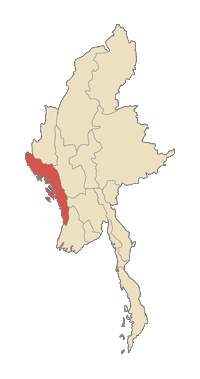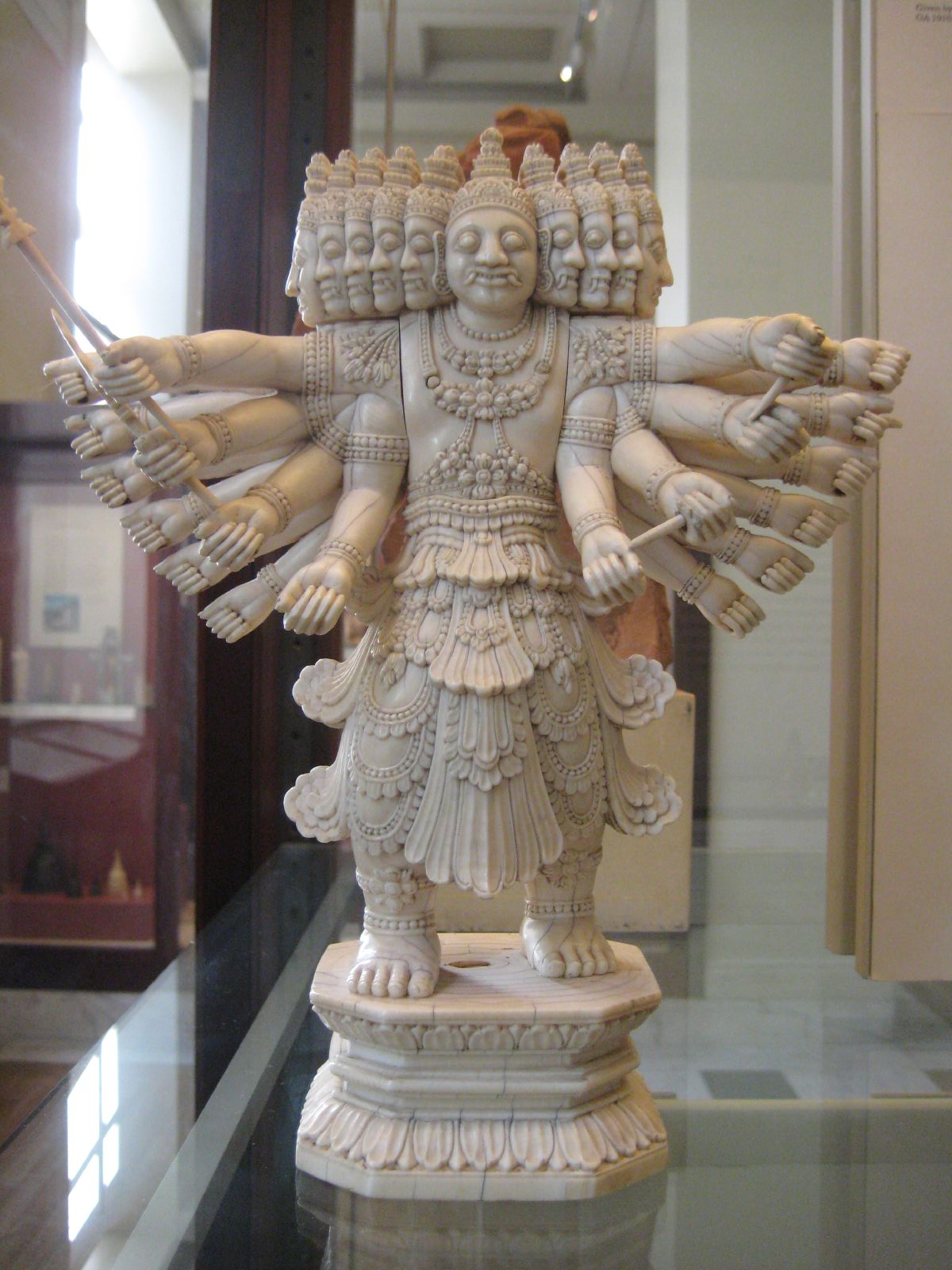|
Marayu
Marayu (Burmese language, Burmese:) was the legendary founder of Dhanyawadi, Dhanyawadi Kingdom and the first mythical king of Arakan. He is considered as founding king of the ancient Arakanese civilization settled around the Kaladan River Valley. Born from a son of a Brahmin and who later married the daughter of chief of Mru people, Mro Tribe. He initially defeated the ''Rakshasa, demons'' (Rakkhasa) whose named trace to the name of "Rakhine" and founded the city of Dhanyawadi#Dhanyawadi Site, Dhanyawadi.Razawin Thitkyan Vol. 1 1997:94/96Dhanyawaddy Razawin Thite Vol. 1 1930:250 History Marayu's birth occurred under unusual circumstances. His mother, In-da-ma-yu, a doe believed to be descended from a lion, gave birth to him in the forest near the mouth of the Mikhyoung River, a tributary of the Kaladan River. His father, indirectly, was King Adz-dzun-na who was a former king who had become a hermit in the Himawonda forest near the source of the Kaladan river. After his birth, ... [...More Info...] [...Related Items...] OR: [Wikipedia] [Google] [Baidu] |
Mara Zi I
Mara Zi I ( Rakhine: မာရေက်, also known as Marauk) was the second king of Dhanyawaddy Arakan who reigned from 2604 to 2572 BCE''On The History of Arakan by Capt A P Phayre - Asiatic Society of Bengal-1844'' - pg 49 according to the traditional Dhanyawaddy and Rakhine Razawin Chronicle. He was the son of King Marayu and Queen Rucitamala, and succeeded his father as the ruler of Dhanyawaddy.''Rakhine Razawin Thit (ရခိုင် ရာဇဝင်သစ်)'' page 155-56 Early life Mara Zi I ascended the throne at the age of 36 following the death of his father, King Marayu. By contrast, Mara Zi I inherited a more stable realm. The chronicles describe him simply as "royal son" (သားတော်) which emphasizes his legitimate lineage but omitting any divine or heroic embellishments.''Rakhine Razawin Thit (ရခိုင် ရာဇဝင်သစ်)'' page 156-57 He became king in 2604 BCE (Sakkaraj 6057) assuming the throne at the Dhanyawaddy Palace. Mar ... [...More Info...] [...Related Items...] OR: [Wikipedia] [Google] [Baidu] |
Dhanyawadi
Dhanyawaddy (; ) was the capital of the first Rakhine people, Arakanese Kingdom, located in what is now Northern Rakhine State, Myanmar. The name is a corruption of the Pali word ''Dhannavati'', which means "large area or rice cultivation or the rice bowl". Like many of its successors, the Kingdom of Dhanyawadi was based on trade between the East (pre-Kingdom of Pagan, Pagan Myanmar, Pyu city states, Pyu, China, the Thaton Kingdom, Mons), and the West (Indian subcontinent). The ancient city of Dhanyawaddy is located 6 miles east of Kyauktaw, Rakhine State, on the right side of the Thay Chaung River at the intersection of latitude 20°52'07.2" north and longitude 93°03'49.9" east. Arakanese legends claim that a Shakya, Sakya clan of Buddha are founder of Dhanyawadi Kingdom. Now they are mixed with Rakhine people.Ethnic Culture Traditional Customs Rakhine 1976 (Burmese: တိုင်းရင်းသားယဉ်ကျေးမှု ရိုးရာဓလေ့ထုံ� ... [...More Info...] [...Related Items...] OR: [Wikipedia] [Google] [Baidu] |
Mru People
The Mru (Mru language, Mru: 𖩃𖩓𖩑) also known as the Mro, Murong, Taung Mro, Mrung, and Mrucha, refer to the tribes who live in the border regions between Myanmar (Burma), Bangladesh, and India. The Mru are a sub-group of the Chin people, a few of whom live in western Myanmar. They are also found in the northern Rakhine State. In Bangladesh, they reside in the Chittagong Hills in southeast Bangladesh, primarily in Bandarban District and Rangamati Hill District. In India, they reside in West Bengal. The Mru people are divided into five distinct linguistic and cultural sub-groups: the Anok, Tshüngma, Dömrong, Dopteng, and Rümma. Origin The Mru of Bangladesh and Myanmar are known as the Mro, Mrucha and Taung-Mro, respectively. The Mru claim that their ancestors lived at the source of the Kaladan River, but are unsure about when their people migrated to the region. They have no division of different exogamous clans or groups of clans, nor do they have a chieftain clas ... [...More Info...] [...Related Items...] OR: [Wikipedia] [Google] [Baidu] |
Monarch
A monarch () is a head of stateWebster's II New College Dictionary. "Monarch". Houghton Mifflin. Boston. 2001. p. 707. Life tenure, for life or until abdication, and therefore the head of state of a monarchy. A monarch may exercise the highest authority and power in the Sovereign state, state, or others may wield that power on behalf of the monarch. Usually, a monarch either personally inheritance, inherits the lawful right to exercise the state's sovereign rights (often referred to as ''the throne'' or ''the Crown, the crown'') or is elective monarchy, selected by an established process from a family or cohort eligible to provide the nation's monarch. Alternatively, an individual may self-proclaimed monarchy, proclaim oneself monarch, which may be backed and Legitimacy (political), legitimated through acclamation, right of conquest or a combination of means. If a young child is crowned the monarch, then a regent is often appointed to govern until the monarch reaches the requisi ... [...More Info...] [...Related Items...] OR: [Wikipedia] [Google] [Baidu] |
History Of Rakhine
Rakhine State occupies the northern coastline of Myanmar up to the border with Bangladesh and corresponds to the historical Kingdom of Arakan. The history of Rakhine is divided into 7 parts – the independent kingdoms of Dhanyawadi, Waithali, Lemro, Kingdom of Mrauk U, Mrauk U, Burmese occupation from 1785 to 1826, British rule in Burma, British rule from 1826 to 1948 and as a part of independent Burma from 1948. From the first millennium AD, Arakan was a frontier region between India and Southeast Asia that could be accessed both by land and sea. The Arakanese Kingdom of Mrauk U, kingdom of Mrauk-U was conquered on December 31, 1784, by the Burmese Konbaung dynasty. In 1826, Arakan was ceded to the British as war reparation after the First Anglo-Burmese War. It became part of the province of Burma of British India in 1886, after the annexation of Burma by the British. Arakan became part of the Crown Colony of British rule in Burma#Burma separated from India, British Burma wh ... [...More Info...] [...Related Items...] OR: [Wikipedia] [Google] [Baidu] |
Kaladan River
The Kaladan (, ) or Kissapanadi River (, ), also known as the Beino, Bawinu and Kolodyne, is a river in the eastern Mizoram, Mizoram State of India, and in Chin State and Rakhine State of western Myanmar. The Kaladan River is called the Chhimtuipui River in India.Still under construction[, The Statesman. It forms the international border between India and Myanmar between 22° 47′ 10" N (where its tributary, the Tiau River , joins it) and 22° 11′ 06" N.NF 46-7 "Gangaw, Burma" ... [...More Info...] [...Related Items...] OR: [Wikipedia] [Google] [Baidu] |
Hinduism
Hinduism () is an Hypernymy and hyponymy, umbrella term for a range of Indian religions, Indian List of religions and spiritual traditions#Indian religions, religious and spiritual traditions (Sampradaya, ''sampradaya''s) that are unified by adherence to the concept of ''dharma'', a Ṛta, cosmic order maintained by its followers through rituals and righteous living, as expounded in the Vedas. The word ''Hindu'' is an exonym, and while Hinduism has been called the oldest religion in the world, it has also been described by the modern term ''Sanātana Dharma'' () emphasizing its eternal nature. ''Vaidika Dharma'' () and ''Arya dharma'' are historical endonyms for Hinduism. Hinduism entails diverse systems of thought, marked by a range of shared Glossary of Hinduism terms, concepts that discuss God in Hinduism, theology, Hindu mythology, mythology, among other topics in Hindu texts, textual sources. Hindu texts have been classified into Śruti () and Smṛti (). The major Hin ... [...More Info...] [...Related Items...] OR: [Wikipedia] [Google] [Baidu] |
Burmese Language
Burmese (; ) is a Tibeto-Burman languages, Tibeto-Burman language spoken in Myanmar, where it is the official language, lingua franca, and the native language of the Bamar people, Bamar, the country's largest ethnic group. Burmese dialects are also spoken by the indigenous tribes in Bangladesh's Chittagong Hill Tracts, India's Mizoram, Manipur, Tripura states and the Burmese diaspora. The Constitution of Myanmar officially refers to it as the Myanmar language in English, though most English speakers continue to refer to the language as ''Burmese'', after ''Burma''—a name with co-official status until 1989 (see Names of Myanmar). Burmese is the most widely-spoken language in the country, where it serves as the lingua franca. In 2019, Burmese was spoken by 42.9 million people globally, including by 32.9 million speakers as a first language, and an additional 10 million speakers as a second language. A 2023 World Bank survey found that 80% of the country's population speaks Burmese ... [...More Info...] [...Related Items...] OR: [Wikipedia] [Google] [Baidu] |
Arakan
Arakan ( or ; , ), formerly anglicised as Aracan, is the historical geographical name for the northeastern coastal region of the Bay of Bengal, covering present-day Bangladesh and Myanmar. The region was called "Arakan" for centuries. It is generally associated with the Rakhine State in Myanmar. The people of the region were known as the Arakanese. When Burma gained independence from Britain in 1948, the Burmese part of the region was called Arakan State. The Burmese military junta changed its name to Rakhine State in 1989 – along with the country's name being changed from Burma to Myanmar, and its capital name from Rangoon to Yangon. Arakan's first states can be traced to the 4th century. Arakan was one of the first Indianised kingdoms in Southeast Asia. It was home to the sacred Mahamuni sculpture of Buddha, which was later transferred to Mandalay by Burmese conquerors in the 18th century. For 356 years between 1428 and 1784, Arakan was ruled by the Kingdom of Mrauk ... [...More Info...] [...Related Items...] OR: [Wikipedia] [Google] [Baidu] |
Rakshasa
Rākshasa (, , ; ; "preservers") are a race of usually malevolent beings prominently featured in Hinduism, Buddhism, Jainism and Folk Islam. They reside on Earth but possess supernatural powers, which they usually use for evil acts such as disrupting Vedic sacrifices or eating humans. The term is also used to describe asuras, a class of power-seeking beings that oppose the benevolent devas. They are often depicted as antagonists in Hindu scriptures, as well as in Buddhism and Jainism. The female form of rakshasa is rakshasi (). Hinduism In Puranas Brahmā, in a form composed of the quality of foulness, produced hunger, of whom anger was born: and the god put forth in darkness beings emaciate with hunger, of hideous aspects, and with long beards. Those beings hastened to the deity. Such of them as exclaimed, “Oh preserve us!” were thence called Rākṣasas. Those created beings, overwhelmed by hunger, attempted to seize the waters. Those among them who said, “ ... [...More Info...] [...Related Items...] OR: [Wikipedia] [Google] [Baidu] |
Burmese Monarchs
This is a list of the monarchs of Burma (Myanmar), covering the monarchs of all the major kingdoms that existed in the present day Burma (Myanmar). Although Burmese chronicles, Burmese chronicle tradition maintains that various monarchies of Burma (Mon people, Mon, Bamar people, Burman, Rakhine people, Arakanese), began in the 9th century Common Era, BCE, historically verified data date back only to 1044 CE at the accession of Anawrahta of Pagan dynasty, Pagan. The farther away the data are from 1044, the less verifiable they are. For example, the founding of the city of Pagan (Bagan) in the 9th century is verifiable–although the accuracy of the actual date, given in the Chronicles as 849, remains in question–but the founding of early Pagan dynasty, given as the 2nd century, is not.Harvey 1925: 364 For early kingdoms, see List of early and legendary monarchs of Burma. The reign dates follow the latest available dates as discussed in each section. Early kingdoms * See List of ... [...More Info...] [...Related Items...] OR: [Wikipedia] [Google] [Baidu] |




